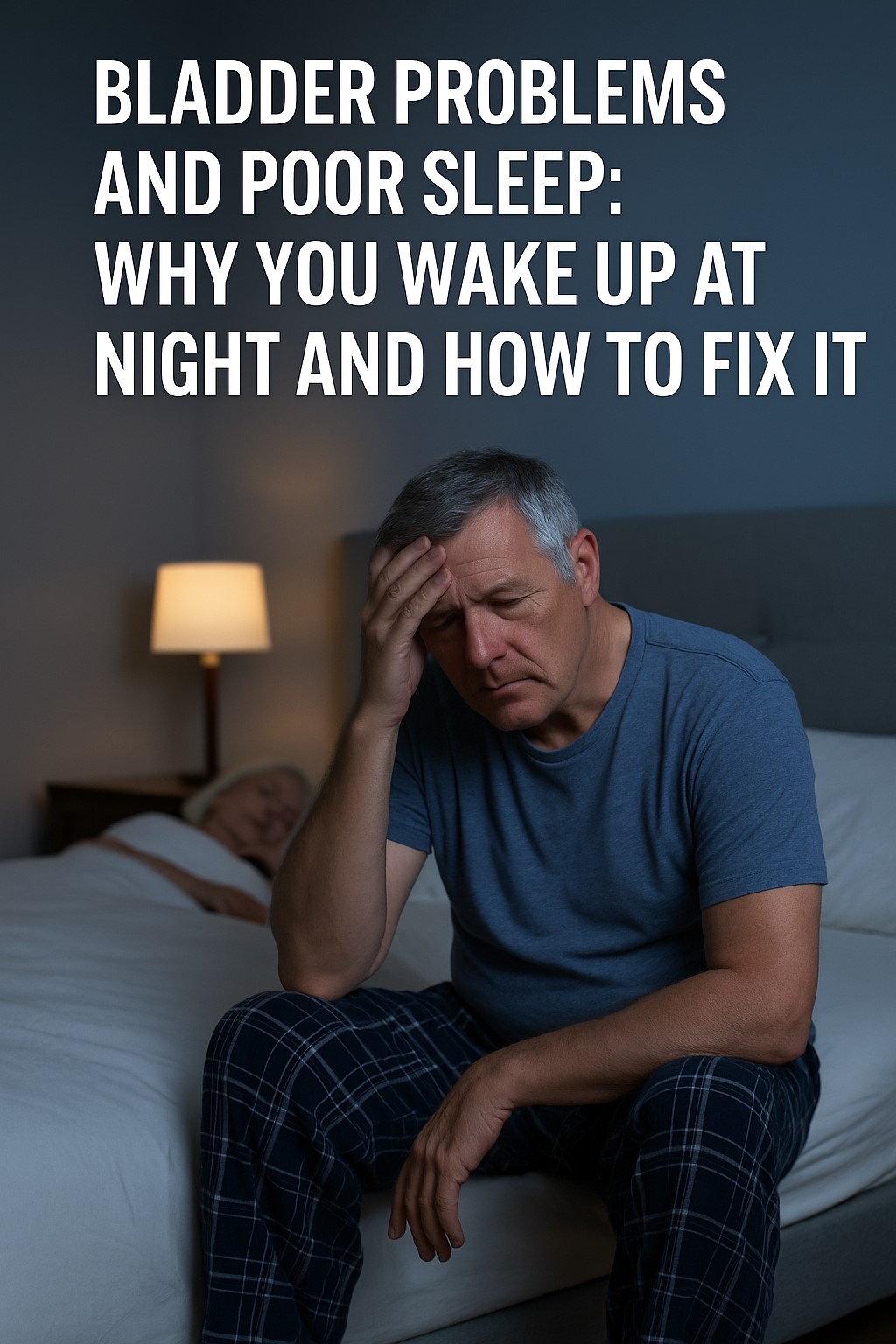Can Belly Fat Increase Your Risk of an Enlarged Prostate?
Many men expect their bodies to change with age—greying hair, less muscle, and a slower metabolism. But did you know that your waistline and blood health could predict problems with your prostate?
A large study in 2025 found a clear link between belly fat, blood sugar, blood fats, and the risk of developing an enlarged prostate—also known as BPH.
Let’s break it down in simple terms.
New Research Links Waist Size and Blood Health to Prostate Growth
In a Chinese study of over 3,000 men aged 45 and over, researchers followed participants for 4 years.
They discovered that men with:
- larger waists,
- higher blood sugar, and
- more fat in the blood (triglycerides)
...were more likely to be diagnosed with benign prostate enlargement.
In fact, the higher these numbers were, the greater the chance of prostate problems.
This means that poor metabolic health – how your body handles sugar and fat – may play a big role in prostate growth.
What Is an Enlarged Prostate (BPH) and Why Does It Matter?
As men age, the prostate – a small gland that helps make semen – often gets bigger. This is called benign prostatic hyperplasia (BPH). It's not cancer, but it can cause:
- Needing to pee more often, especially at night
- Feeling like your bladder isn’t empty
- A weak urine stream or difficulty starting
- Urgency – rushing to the toilet
These symptoms can disrupt sleep, affect quality of life, and lead to complications like bladder problems.
By age 60, about 1 in 2 men have symptoms of BPH.
By 80, it’s up to 4 in 5.
Can a Simple Blood and Waistline Score Predict Prostate Problems?
The researchers used a special score (called TyG‑WHtR) to combine:
- Blood sugar (linked to diabetes risk)
- Blood fat (especially triglycerides)
- Waist-to-height ratio (a way to measure belly fat)
Don’t worry about the name. What matters is this:
Men with a bigger belly and unhealthy blood levels were more likely to get BPH.
And this was true even if they weren’t overweight on the scales. The belly size and blood tests told a better story than body weight alone.
Simple Lifestyle Tips to Lower Your Risk of Prostate Enlargement
Good news: this isn’t about medicine – it’s about daily habits.
Here’s what you can start doing today:
Watch your waist
- Try to keep your waist less than half your height.
- If you're 180cm tall, your waist should be under 90cm.
Eat for balance
- More vegetables, grains,, and lean protein
- Less sugar, white bread, fried foods, and processed meats
Move more
- Even 30 minutes of walking daily can help shrink belly fat and improve your blood levels.
Sleep better and manage stress
- Poor sleep and high stress can make blood sugar and fat worse.
Quit smoking and cut back on alcohol
- Both are linked to worse prostate symptoms and poorer blood health.
Why Too Much Belly Fat Affects Your Prostate Health
Fat around the belly isn’t just extra weight. It’s active tissue that affects your body’s balance.
It can:
- Increase inflammation
- Disrupt hormones
- Make it harder for your body to process sugar properly
These changes may push the prostate to grow more rapidly and worsen urinary symptoms.
Everyday Habits That Help Protect Your Prostate
You don’t need to be perfect. But small steps add up. Aim for:
- Regular movement, especially walking or swimming
- A colourful plate – more greens, oranges, reds (think carrots, peppers, spinach)
- Simple carbs in moderation – like white rice or pastries
- Water over sugary drinks
- Steady weight loss if your waist is creeping up
These changes improve your whole body, not just your prostate.
Worried About Frequent Urination? These Might Be Early BPH Symptoms
Keep an eye out for:
- Going to the toilet more than 8 times a day
- Waking up multiple times at night to urinate
- Feeling like you can’t empty your bladder
- Dribbling after you pee
- Sudden urges to go
If you’ve noticed these signs, it’s time to take them seriously. They may be early signs of an enlarged prostate.
When to Get Checked: Prostate Symptoms and Risk Factors to Know
Consider getting checked if you:
- Are over 50
- Have a family history of prostate issues
- Have high blood pressure, diabetes, or high cholesterol
- Have noticed urinary changes
- Carry excess weight around your waist
Your GP can offer:
- A simple urine check
- Blood tests for sugar and fat levels
- A chat about your symptoms
- And if needed, further prostate tests
Early checks mean better control and less chance of complications.
How to Keep Your Prostate Healthy After 45
Simple things you can do that really make a difference:
- Stay active—even brisk walking counts
- Cut the sugar—especially sugary drinks and snacks
- Slim your waist—it’s more important than your total weight
- Eat more fibre—beans, oats, vegetables
- See your doctor for yearly checks if you're over 50
These habits lower your risk of BPH and help your heart, energy, and even sexual health.
Final Takeaway: Better Metabolic Health Means a Healthier Prostate
This study adds to growing evidence that how your body handles sugar and fat can impact your prostate – not just your age or genes.
By making small daily changes, you can:
- Improve your waist size
- Balance your blood levels
- Lower your risk of uncomfortable urinary symptoms
- And feel better overall
Looking after your body is like looking after your prostate.


